CSI 2120代做、代写Python/Java设计编程
Faculty of Engineering
School of Electrical
Engineering
and Computer Science
CSI 2120
Programming Paradigms
Similarity image search
Comprehensive assignment
(24%)
Winter 2024
Project for a group of 2 students at most
Part 1 due February 16th before 23:59
Part 2 due March 8th before 23:59
Part 3 and 4 due le April 22nd before 23:59
Late assignment policy: minus 10% for each day late. For example : a project due Friday night but
handed out on the Monday morning: -30%
Problem description
Nowadays, images are created and accumulated at a frenetic pace. It has become essential to have powerful
computer tools capable of analyzing these images and facilitating the search, classification, and discovery
of images of interest. In this project, you are asked to program a simple method for searching similar
images. By similar images, we mean images that resemble each other in terms of the content they present
and their visual appearance, colors and textures (for example, images showing sunsets).
Your program will manipulate color digital images. Let's then explain how these images are structured. A
digital image is divided into a rectangular grid in which each element is a pixel ('picture element'). This
grid contains a certain number of columns and rows, defining the image's resolution (for example, your
phone can probably produce images with a resolution of 4032x3024 pixels). A pixel contains the color
information associated with the corresponding position in the image. If your image were in grayscale (a
'black and white' image), each pixel would have a value between 0 and 255 (this 8-bit representation is
the most common), with 0 being black, 255 being white and the other values representing different shades
of gray. In the case of a color image, each pixel contains three values (three channels), corresponding to
the three primary colors: red, green, blue (RGB). These three values represent the amount of red, green,
and blue required to produce the desired color. For example, the color 255: red, 255: green, 0: blue will
produce a light yellow, while the color 50: red, 0: green, 0: blue will result in a dark red. The values
associated with a pixel are usually represented by a vector [R, G, B] containing the values for these three
channels (e.g. [255, 255, 0] for light yellow). Since each color can take a value between 0 and 255, the
combination of the three channels produces 256 x 256 x 256 different colors (i.e. more than 16 million).
CSI 2120 page 2
_________________________________________________________________________________________________
We are looking for similar images. So, let’s assume that images with similar colors should have similar
content. This is a simplistic assumption that is not always true but generally yields acceptable albeit
imperfect results. This is what we will verify in this project. Therefore, it is necessary to calculate the
histogram of an image and compare these histograms.
The histogram is simply the count of the colors contained in an image. It involves counting how many
pixels have the color [0, 0, 0], how many have the color [0, 0, 1], and so on. However, this would mean
counting the pixels for all 16 million possible colors, which is expensive and not very precise. It is
therefore recommended to reduce the color space. This can be done by simply reducing the number of
possible values, for example, by going from 8-bit values to 3-bit values per channel, resulting in a color
space of only 8 x 8 x 8 = 512 possible colors. In this case, a simple bit right-shift by 8 – 3 = 5 positions
reduces the space. The histogram will then have only 512 entries, a bin for each of the possible colors. To
compare images with different resolutions (different numbers of pixels), it is necessary to normalize the
histogram, i.e., divide each entry by the total number of pixels (such that by summing all the values of the
histogram, we will obtain 1.0).
Histogram comparison
As explained, the images will be compared by comparing their histograms. This can be done using
histogram intersection which can be computed, for the histograms H1 and H2, as follows:
If the two histograms are identical, this sum will give a value equal to 1.0. Conversely, if the two images
have no colors in common, then their histogram intersection will be equal to 0.0. Consequently, the more
similar are two images, the closer to 1.0 will be their histogram intersection.
Searching similar images
You are asked to find the images that are similar to a query image using color histogram intersection. An
image dataset will be provided for the search. The algorithm that searches the K most similar images to a
query image I using a color space reduced to D bits is as follows:
1. Compute the reduced color histogram of I
a. Reduce the pixel values by applying (8-D) right bit shifts for each channel R, G, B.
i. R' = R >> (8-D)
ii. G' = G >> (8-D)
iii. B' = B >> (8-D)
b. The number of bins in the histogram H will be N=2D * 3
c. Count how many pixels of each color are contained in I to obtain histogram H. The
histogram H is an array of N elements.
CSI 2120 page 3
_________________________________________________________________________________________________
i. The index of the histogram bin corresponding to color [R',G',B'] can be computed
as (R' << (2 * D)) + (G' << D) + B)
d. Normalize H such that the values of all its bins sum to 1.0
2. Compare H with all pre-computed histograms in the image set.
a. This comparison is done using histogram intersection
b. Returns the K images with distances the closest to 1.0
Programming
You have to write programs under different paradigms that solve different versions of this problem. You
will receive specific instructions for each language.
Each program will be marked as follows:
Program produces the correct result [3 points]
Adherence to programming paradigm [2 points]
Quality of programming (structures, organisation, etc) [1 point]
All your files must include a header showing student IDs and names of the group members.
All files must be submitted in a zip file.
CSI 2120 page 4
_________________________________________________________________________________________________
Dataset
• You have access to a dataset of images. The images are provided in jpg format. The histogram of
each image in this dataset has been computed (3 bits per channel) and saved in a text file.
• We also give you 16 query images. You will have to find the 5 most similar images to each query
images. The query images are provided in jpg and ppm format, you can use one or the other.
CSI 2120 page 5
_________________________________________________________________________________________________
1. Object-oriented part (Java) [6% of your final mark]
Since this solution must follow the object-oriented paradigm, your program must be composed of a set of
classes. Specifically, it must include, among others, the classes listed below.
In addition to the source code of your solution, you must also submit a document that includes a UML
diagram of all your classes (showing attributes, associations and methods). Do not use static methods,
except for the main function. This document must also cite all references used to build your solution.
• The SimilaritySearch class
o that contains the main method
▪ you must specify the image filename, the image dataset directory
• java SimilaritySearch q01.jpg imageDataset2_15_20
▪ you can assume that the histograms of the image dataset have been pre-computed
▪ however, you must compute the histogram of the query image
▪ you can assume that the search is done on 3-bit color reduced images but make
your program as generic as possible (no hard-coding of the depth value except in
the main method).
▪ The program must print the name of the 5 most similar images to the query image
• The ColorImage class that includes
o A constructor that creates an image from a file
▪ public ColorImage(String filename)
▪ you can read the image from the jpg or the ppm format (just choose one format)
• you can use the JMF Java API to read jpg images
• the ppm format is just a text file with the RGB values listed
▪ the pixel values of the images are stored in an array representation of your choice
(to be described in the submitted document)
o The following image attributes (and the corresponding getter methods)
▪ int width
▪ int height
▪ int depth (the number of bit per pixel)
o A getPixel method that returns the 3-channel value of pixel at column i row j in the
form of a 3-element array
▪ public int[3] getPixel(int i, int j)
o A reduceColor method that reduces the color space to a d-bit representation
▪ public void reduceColor(int d)
CSI 2120 page 6
_________________________________________________________________________________________________
• The ColorHistogram class that includes
o A constructor that construct a ColorHistogram instance for a d-bit image
▪ public ColorHistogram (int d)
o A constructor that construct a ColorHistogram from a text file
▪ public ColorHistogram (String filename)
o A setImage method that associate an image with a histogram instance
▪ public void setImage(ColorImage image)
o A getHistogram method that returns the normalized histogram of the image
▪ public double[] getHistogram()
o A compare method that returns the intersection between two histograms
▪ public double compare(ColorHistogram hist)
o A save that saves the histogram into a text file
▪ public void ColorHistogram (String filename)
o plus any other classes, methods or attributes you judge necessary
CSI 2120 page 7
_________________________________________________________________________________________________
2. Functional programming part (Scheme) [6% of your final mark]
For this part of the comprehensive assignment, we ask you to implement the Image Similarity Search
algorithm following the functional paradigm. Refer to the general problem description section for the
algorithmic steps.
The requirements are the same as for the Object-oriented part, except that, this time, you do not have to
generate the histograms of the query images. You can use the histogram files that you have generated
using your Java program.
You must create the following function in order to start your program:
(similaritySearch queryHistogramFilename imageDatasetDirectory)
This function should return the name of the 5 most similar images to the query image. You will obviously
have to create other functions. Remember that under the functional paradigm, it is much better to create
several short functions than few long ones.
Submit your project in a zip file containing the scheme functions file and a document listing the functions
you have created, and the output obtained for each of the query image. This document must also cite all
references you may have used to build your solution.
All your Scheme functions must have a header describing what the function does, the input parameters
and the output.
You are not allowed to use functions terminating by ! (such as the set! function) and you must not use
iterative loops, use recursion instead.
CSI 2120 page 8
_________________________________________________________________________________________________
3. Concurrent programming part (Go) [6% of your final mark]
For the concurrent part of the comprehensive assignment, we ask you to program the image similarity
search algorithm using multiple threads. To make it more computationally expensive, your program will
have to compute all histograms (from the query and database images) each time you perform a query.
Your go program is executed with the following arguments:
> go run similaritySearch queryImageFilename imageDatasetDirectory
Note: os.Args provides access to the command line arguments.
Reading a jpeg image
Fortunately, if you look at the Go documentation about the image package, https://pkg.go.dev/image, you
will find an example showing how to compute the histogram of an image. This is not exactly what you
have to do but this is a great starting point. A slightly modified version of this example is provided; it has
the signature of the histogram Go function you will have to write.
type Histo struct {
Name string
H []int
}
func computeHistogram(imagePath string, depth int) (Histo, error)
This function computes the histogram of the specified jpeg image and reduces it to the number of bits
given by the depth parameter. The starting code is relatively easy to follow, one thing to notice is that the
pixel values of images in Go are store in uint32 and you must right-shift the bits of each channel by 8
positions to get the correct range (0 to 255). Check the provided code, it simply displays the RGB values
of an image.
You will also need a function that computes the histograms of a slice of image filenames.
func computeHistograms(imagePath []string, depth int,
hChan chan<- Histo)
When a histogram is computed, it is sent to the given channel.
CSI 2120 page 9
_________________________________________________________________________________________________
The main function
Your main function must perform the following operations:
1. Create the channel of histograms;
2. Get the list of all image filename in the dataset directory;
3. Split this list into K slices and send each slice to the go function computeHistograms;
4. In a separate thread, open the query image and compute its histogram
5. Read the channel of histograms
a. When a histogram is received compare it to the query histogram
b. Based on the similarity results, maintain a list of the 5 most similar images
6. Once all images have been processed, print the list of the 5 most similar images.
7. Close all channels and make sure all threads are stopped before the program terminates.
Experiments
In order to determine the optimal configuration for your concurrent algorithm, we ask you to perform the
following experiments and report the execution time for each case:
• K=1
• K=2
• K=4
• K=16
• K=64
• K=256
• K=1048
Create a graph showing running time versus number of threads (use the average running time for all
queries). Do not forget to not print text to the console while you are estimating running time, this would
considerably slow down your program. Also specify the operating system and the specifications of your
processor (including the number of cores). You can also add your own experiences with other
configurations. Remember that your program must compute all histograms (from query and dataset
images), do not use the pre-computed histogram text files.
In addition to your source code, you must submit a document showing the results of your experiments.
CSI 2120 page 10
_________________________________________________________________________________________________
4. Logical programming part (Prolog) [6% of your final mark]
For this last part of the comprehensive assignment, you have to implement the Image Similarity Search
algorithm following the logic programming paradigm. Refer to the general problem description section
for the algorithmic steps.
The requirements are the same as for the other parts, except that, this time, you do not have to generate
the histograms of the images. You can use the histogram text files for both the query and dataset images
that are provided.
You must create the following predicate that solves this problem as follows:
?- similarity_search('q00.jpg.txt',S).
S = [('2144.jpg.txt', 0.8799533333333334), ('1998.jpg.txt',
0.86362), ('3538.jpg.txt', 0.79226), ('3920.jpg.txt', 0.77334),
('4923.jpg.txt', 0.76828)] .
(note that the solution shown is not correct, it is only provided to demonstrate the format of the solution).
We give you a starter project that includes most of the predicates required. In particular, the one that reads
a histogram file and returns a list will be very useful.
?- read_hist_file('q00.jpg.txt',H).
H = [2715, 22, 0, 0, 0, 0, 0, 0, 2|...] .
The one that generates the list of text files in a directory is also useful.
?- dataset(D),directory_textfiles(D,L).
D = 'C:UsersDocumentsimageDataset2_15_20',
L = ['1000.jpg.txt', '1001.jpg.txt', '1003.jpg.txt', '1004.jpg.txt',
'1005.jpg.txt', '1006.jpg.txt', '1007.jpg.txt', '1008.jpg.txt',
'1009.jpg.txt'|...].
Note how the dataset directory path is provided through the predicate dataset/1.
CSI 2120 page 11
_________________________________________________________________________________________________
Finally, we also provide you with the predicate that performs the high-level algorithm.
similarity_search(QueryFile,DatasetDirectory, DatasetFiles,Best):-
read_hist_file(QueryFile,QueryHisto),
%1.
compare_histograms(QueryHisto, DatasetDirectory,
DatasetFiles, Scores), %2.
sort(2,@>,Scores,Sorted), %3.
take(Sorted,5,Best). %4.
As you can see, this predicate first read the histogram file of the query image (read_hist_file/2). It then
compares this histogram with all the histograms in the list of histogram files (compare_histograms/4) by
producing a list of (HistogramFilename,Score) pairs. The next step sorts the obtained list (sort/4) from
which the first 5 pairs are extracted (take/3).
Read this Prolog file carefully and implement the missing predicates.
Submit your project in a zip file containing the well-commented Prolog predicates; all your Prolog
predicates must have a short header describing what the predicate does and its parameters. Also include a
document showing the output obtained for each of the query image.
CSI 2120 page 12
_________________________________________________________________________________________________
Rules
You can do this assignment in a group of two to learn team work. Make sure you collaborate both in
thinking and brainstorming about this problem and programming with your partner. Any similarity
between your programs to other groups is considered plagiarism. Yes, if you do not like team work, you
can do it alone. Do not use any code or program from the Internet because it is also considered plagiarism.
See the university policies for plagiarism in the following link.
https://www2.uottawa.ca/about-us/provost
Important Note: Using ChatGPT is strictly forbidden, if your TA sees that your code comes from
chatGPT it, you will receive 0 for all parts of this project immediately.
Measures that we take to detect plagiarism
Teaching assistants have been instructed to report to the professor any suspicion of plagiarism
they find when they mark assignments.
If plagiarism has been detected in any part or in the whole assignment, the professor will take
appropriate measures. Recall that it is equally bad to copy a solution and to let someone else
copy your solution.
请加QQ:99515681 邮箱:99515681@qq.com WX:codinghelp
- Wire&Tube China-德国现场推介会流程与安排
- 再登国际舞台 黎京雄院长将在第十四届欧洲LA&HA激光与健康国际研讨会分享中国方案
- 迈巴制药 (Myrobalan Therapeutics ) CSF1R抑制剂项⽬获得肌萎缩性侧索硬化症协会(ALS Association)资助
- 世界桑拿大奖“Sauna37”于3月7日启动
- 壮锦面料多种纹样卖断货,成为新中式市场热门黑马
- 云南农业资讯门户:解锁绿色发展的农业密码,开启乡村振兴新篇章
- 元宵佳节共团圆,火星人集成灶个性化膳食引领健康烹饪新纪元
- TEAMAMA茶妈妈广州首家轻养茶体验店火爆开业
- 创维光伏创新光伏+模式,推进光伏发电多元布局
- 天津宠物拖运,天津24小时托运宠物服务,提供全国宠物托运服务
- 奢侈品领导者:Automobili Pininfarina荣获三项国际大奖
- AACSB 宣布 2024 年度影响力领袖名单
- 义乌市友久贸易有限公司四川分公司用心塑造形象,去迎合消费群
- 赋能行业生态,硅基仿生发布CGM领域首份蓝皮书
- 鼎阳科技丨国产示波器新标杆!高分辨率产品营收增长超60%
- 卓翼智能圆满完成深圳市超高层建筑灭火无人机实战应用测试
- 南京移动手机课堂进社区 智慧助老暖人心
- 「唐登华·家庭治疗」壹点灵心理·杭州站第一期集训顺利开展
- Trackinsight 2024 Global ETF Survey Report Released: Unveiling 50+ Charts on Worldwide ETF Trends
- 辅导研讨悟思想 巡听旁听提质量
- Ecotape Increases Exports by 30% Using Descartes’ Global Trade Intelligence Solution
- 三亚墙体手绘彩绘壁画专业团队——美佳彩绘
- 佳安智能潘阳荣获 2023“上海科技青年 35 人引领计划”提名奖
- Floship 荣获德勤新星奖
- Mavenir与QCT依托采用Intel® vRAN Boost的第四代Intel至强可扩展处理器,推出工业级DU来发挥开放式RAN部署的高性能和灵活性优势
- 从一场交付,读懂招商蛇口与西安的“十年之约”
- 重庆润兴120救护车长途跨省转运患者服务咨询公司
- 锦江都城酒店中的《繁花》元素
- H.I.G. Capital新设迪拜办事处,以拓展中东业务
- The most global Alimentaria&Hostelco confirms the strength of the food industry and its innovati
推荐
-
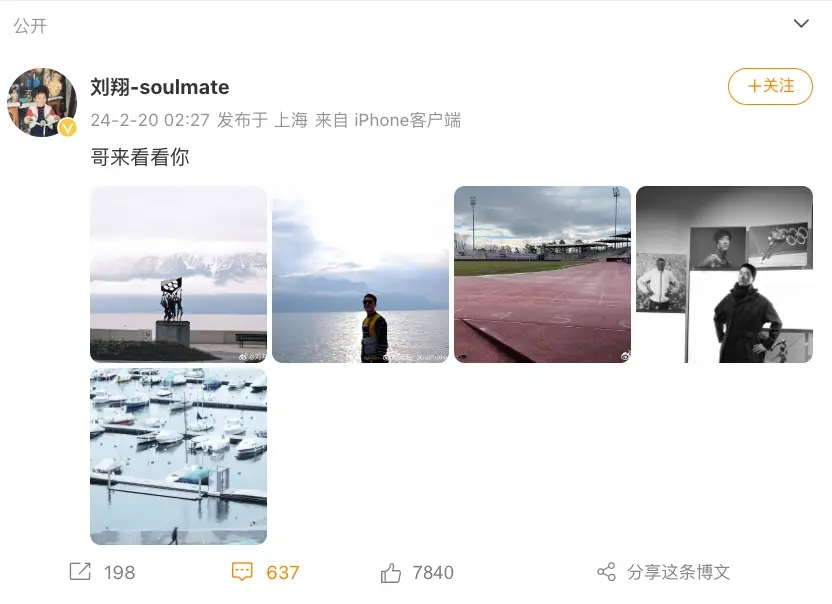 奥运冠军刘翔更新社交账号晒出近照 时隔473天更新动态!
2月20日凌晨2点,奥运冠军刘翔更新社交账号晒
资讯
奥运冠军刘翔更新社交账号晒出近照 时隔473天更新动态!
2月20日凌晨2点,奥运冠军刘翔更新社交账号晒
资讯
-
 产业数字化 为何需要一朵实体云?
改革开放前,国内供应链主要依靠指标拉动,其逻
资讯
产业数字化 为何需要一朵实体云?
改革开放前,国内供应链主要依靠指标拉动,其逻
资讯
-
 中国减排方案比西方更有优势
如今,人为造成的全球变暖是每个人都关注的问
资讯
中国减排方案比西方更有优势
如今,人为造成的全球变暖是每个人都关注的问
资讯
-
 大家一起关注新疆乌什7.1级地震救援见闻
看到热气腾腾的抓饭马上就要出锅、村里大家
资讯
大家一起关注新疆乌什7.1级地震救援见闻
看到热气腾腾的抓饭马上就要出锅、村里大家
资讯
-
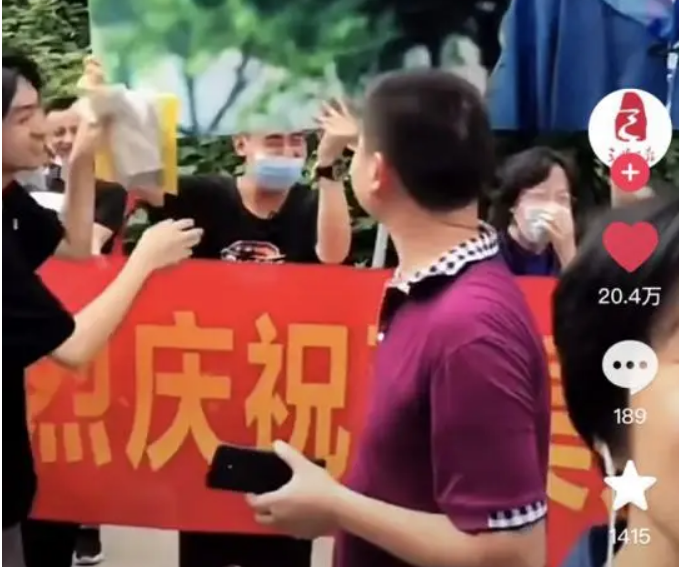 一个“江浙沪人家的孩子已经不卷学习了”的新闻引发议论纷纷
星标★
来源:桌子的生活观(ID:zzdshg)
没
资讯
一个“江浙沪人家的孩子已经不卷学习了”的新闻引发议论纷纷
星标★
来源:桌子的生活观(ID:zzdshg)
没
资讯
-
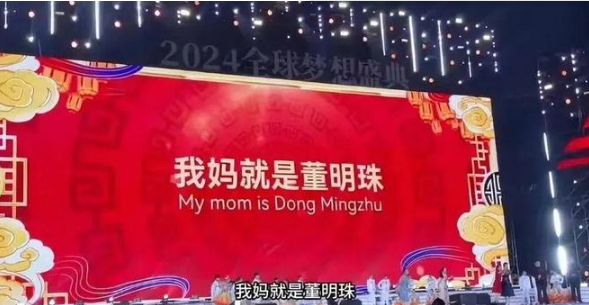 王自如被强制执行3383万
据中国执行信息公开网消息,近期,王自如新增一
资讯
王自如被强制执行3383万
据中国执行信息公开网消息,近期,王自如新增一
资讯
-
 抖音直播“新红人”进攻本地生活领域
不难看出,抖音本地生活正借由直播向本地生活
资讯
抖音直播“新红人”进攻本地生活领域
不难看出,抖音本地生活正借由直播向本地生活
资讯
-
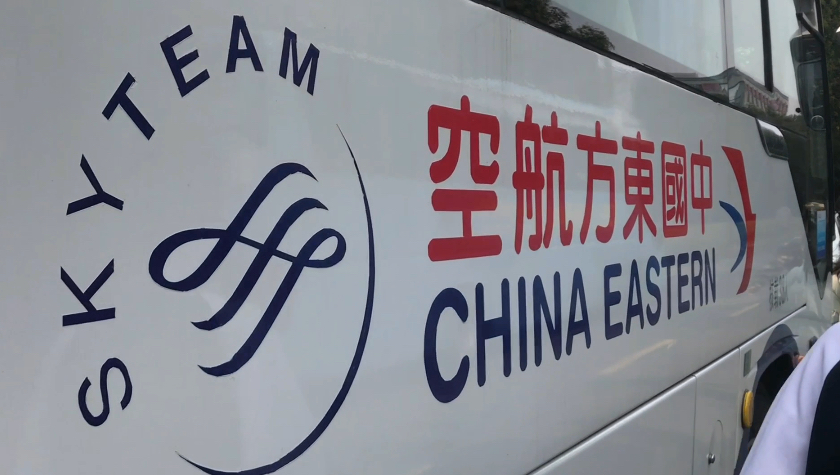 男子“机闹”后航班取消,同机旅客准备集体起诉
1月4日,一男子大闹飞机致航班取消的新闻登上
资讯
男子“机闹”后航班取消,同机旅客准备集体起诉
1月4日,一男子大闹飞机致航班取消的新闻登上
资讯
-
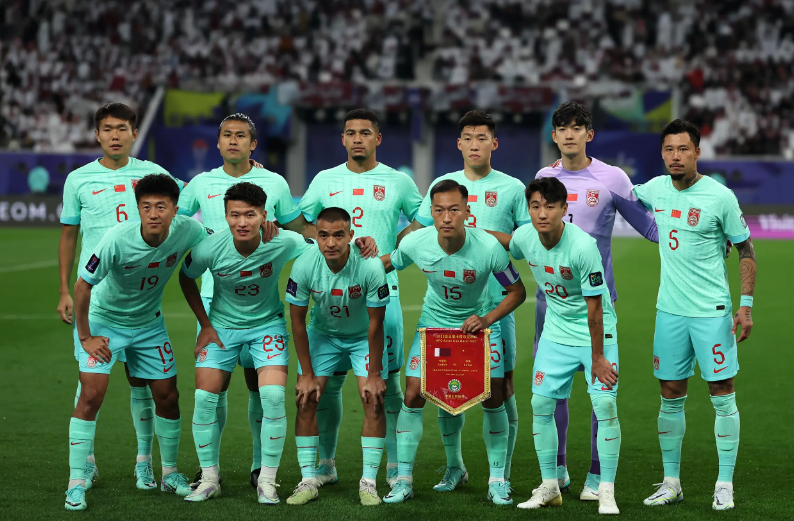 国足13次出战亚洲杯首次小组赛0进球
北京时间1月23日消息,2023亚洲杯小组
资讯
国足13次出战亚洲杯首次小组赛0进球
北京时间1月23日消息,2023亚洲杯小组
资讯
-
 新增供热能力3200万平方米 新疆最大热电联产项目开工
昨天(26日),新疆最大的热电联产项目—&md
资讯
新增供热能力3200万平方米 新疆最大热电联产项目开工
昨天(26日),新疆最大的热电联产项目—&md
资讯

